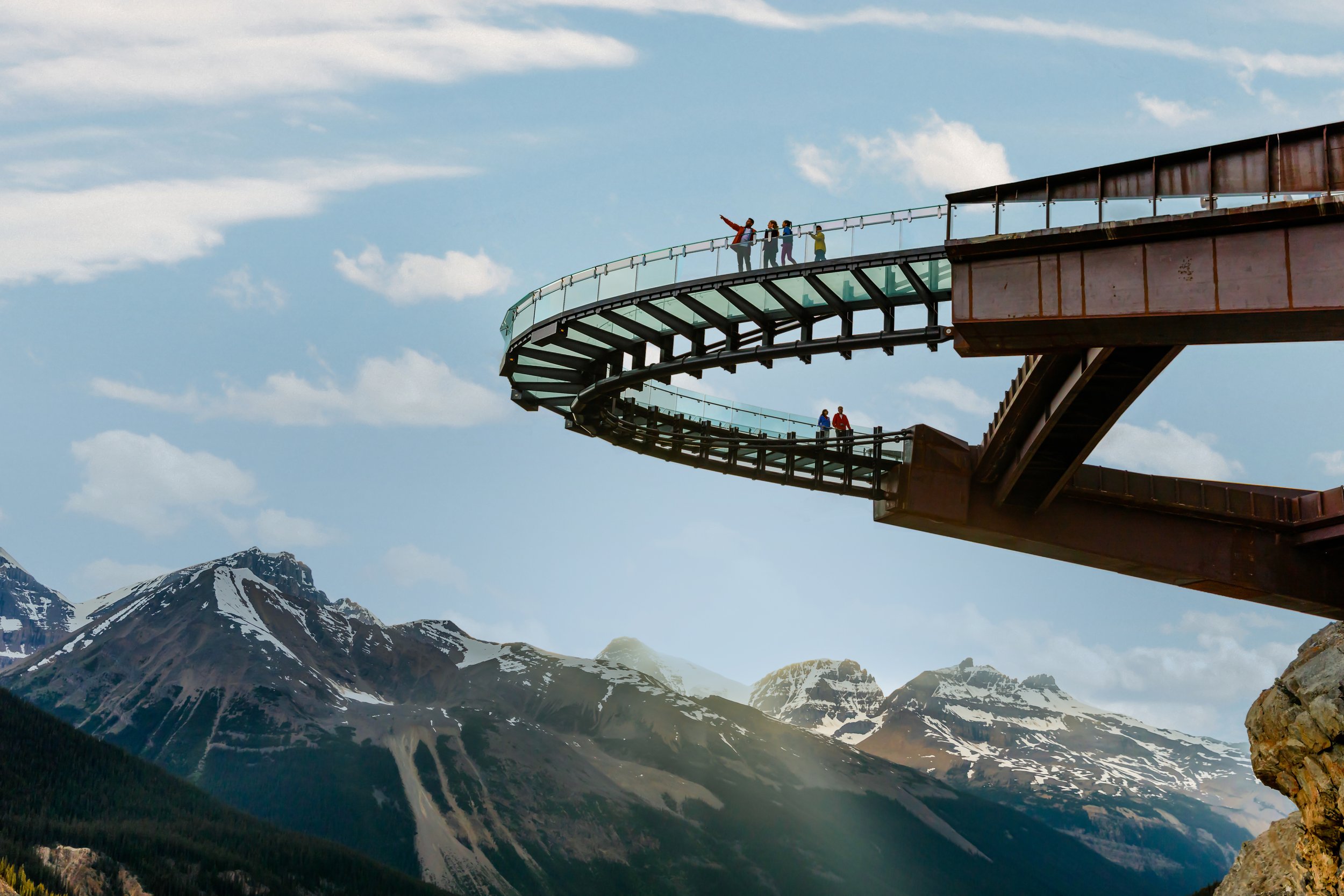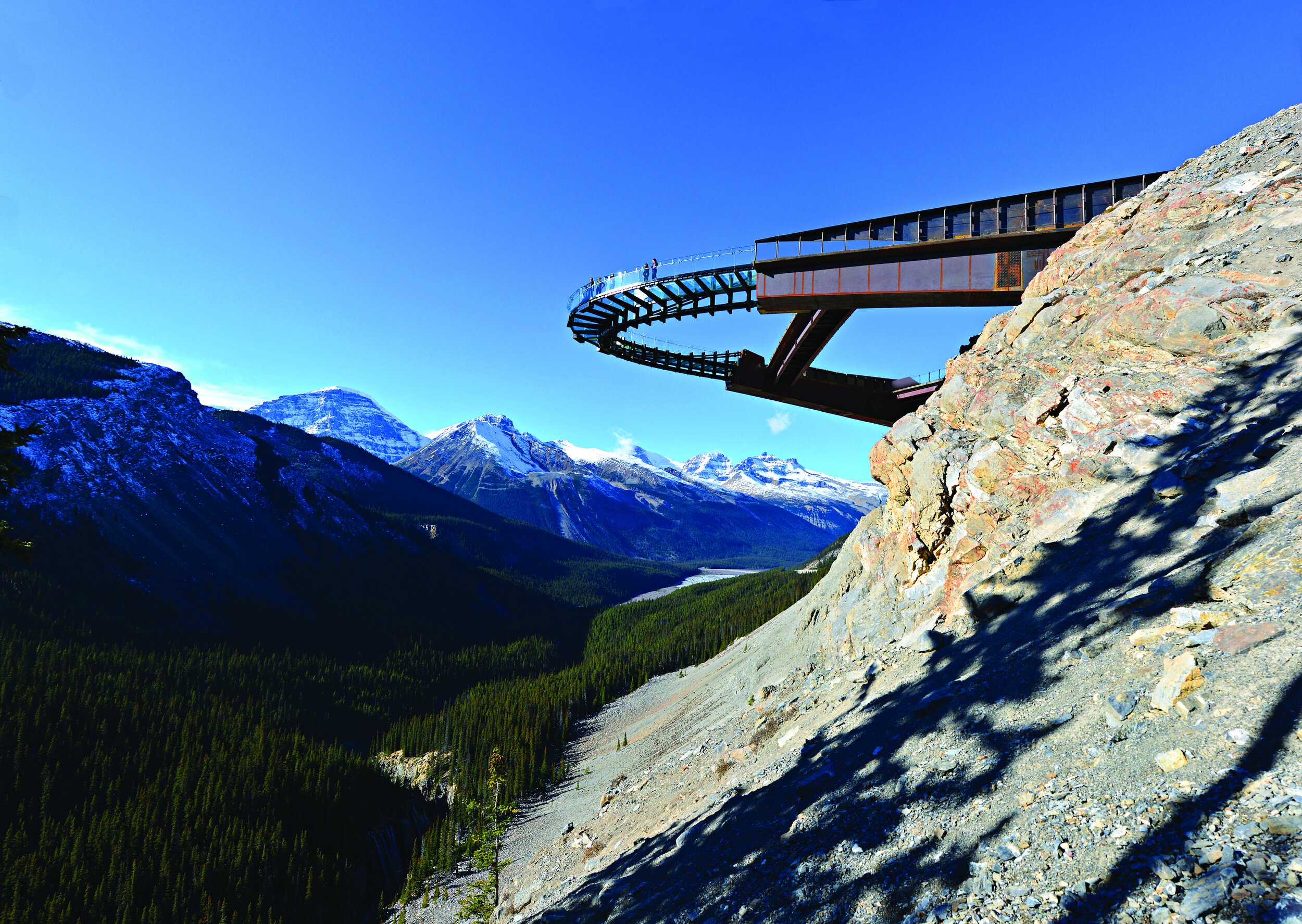Columbia Icefield Skywalk, jasper, Alberta
Engineering An Experience: The Columbia Icefield Skywalk
Setting foot on the Columbia Icefield Skywalk answers a simple but extraordinary question: What if you could do more than look at a landscape — what if you could become part of it? Standing on the glass walkway 280m above the Sunwapta Valley floor, the bracing winds, roaring waterfalls, and towering mountain spires grip the senses and ignite the imagination. The Skywalk pushes visitors past the edge of the expected into the sublime.
For Geoff Kallweit, Associate at engineering consultancy RJC Engineers, the Columbia Icefield Skywalk represents a new (if not harrowing) vantage point on the wonder of the valley.
“The Skywalk project was about putting people into a context that would allow them to appreciate the surroundings in a very spectacular and unadulterated way,” he says.
This fresh perspective on the wonder of the Columbia Icefield is core to the Skywalk’s purpose. More than roadside attraction, it is a whole-body experience. One created through thoughtful design and ingenious engineering.
The Skywalk itself is a sleek, horizontal horseshoe of glass and steel, anchored deep into the rockface. Visually, it is intentionally dramatic, resembling a sweeping arc into the alpine air, or a bridge suddenly turning back onto itself. A visitor’s feeling of being suspended mid-air is due to this striking cantilevered position — that, and the clear glass panels that make up the Skywalk’s floor. Look down and you’ll see your shoes against the valley floor below.
“There’s a thrill to it,” Geoff contends. “A sense of adventure and danger. An experience that allows you to feel like you're doing something that’s a little bit scary within the bounds of safe engineering.”
You'll find an emphasis on safety throughout the entirety of the Skywalk project — every natural element was accounted for when designing its glass walkway. Including wind. This engineering work is proudly regulated by APEGA, the organization responsible for ensuring the highest standards are met when it comes to public safety. Especially when you're 280m off the ground.


“We commissioned a wind tunnel analysis for the glass portion of the structure that hangs out at the very end of the Skywalk.” says Geoff.
This testing resulted in the addition of glass deflector panels to break the wind at higher speeds. Coupled with dampers, these modifications keep the walkway from moving dangerously underfoot. That said, like most suspended structures, the Skywalk does, indeed, move.
“You’re not just on totally solid ground. A) You’re way up in the air. B) It’s all glass, and you can see down below you.” This is what the engineering of experience is all about: using theoretical skills and physical materials to create a feeling. It’s why Geoff was drawn to a career in engineering in the first place.
“You can conceive something using math and models and theory and imagination. And then, you see it built — and that’s really exciting.”

